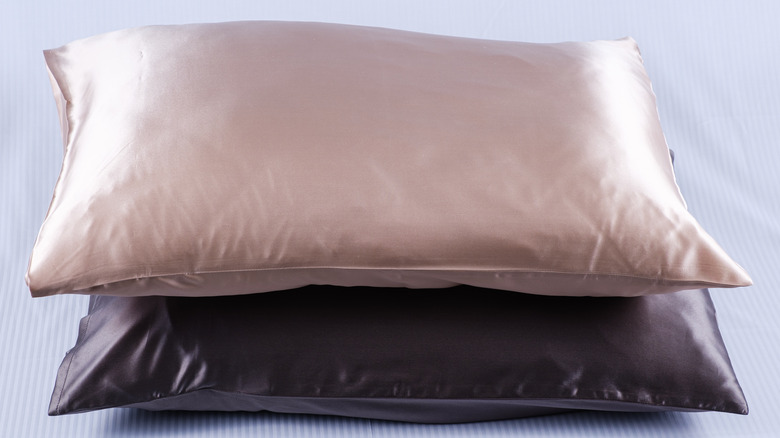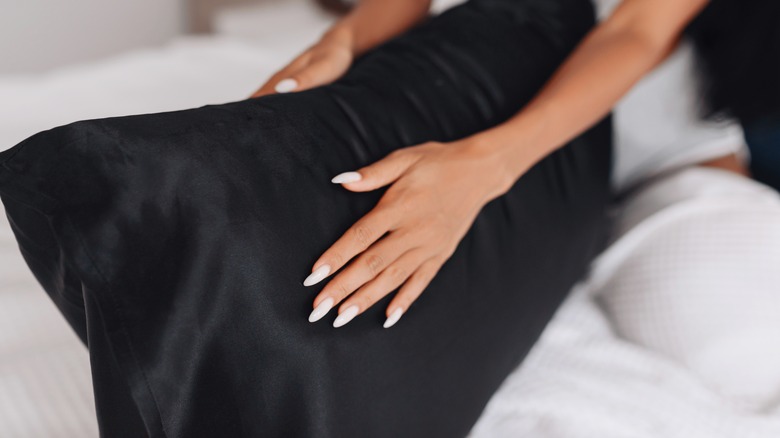Satin Or Silk? Let's Dive Into The Beauty Pros And Cons Of The Pillowcase Debate
Every night, you want to collapse into bed and feel all snuggly, surrounded by the fluffiest of pillows. You need your beauty rest, and so do your hair and skin. Cotton fabrics may make for comfy bedsheets. But cotton pillowcases, on the other hand, can wreak havoc on your hair and skin. They can snarl up your strands, creating breakage, and, potentially even clogging pores. So, while it may be soft, it isn't the best material on which to rest your head.
You might think satin or silk sheets belong purely in movie star territory. And it may be true that an entire set of all-silk sheets might be out of reach, but there's a bright side. Solo pillowcases are available without the expense of investing in whole sheet sets. Plus, with the wide variety of options, you can upgrade to a luxe pillowcase at nearly any price point.
When shopping, remember that the material you select is just as important as how often you change your pillowcase. Silk and satin both have their own perks. So, here's how to choose between them so you — and your hair and skin — can rest easy.
Satin pillowcases are budget-friendly indulgences
Satin is actually a type of weave, not the name of a fabric. Although satin was originally made from silk, many modern satins are made from rayon and polyester. It's shiny on one side, dull on the other, incredibly wrinkle-resistant, and super smooth. Because of its slippery-like texture, it provides little friction to your hair, helping to eliminate bed head. When comparing satin to silk, certified trichologist Bridgette Hill tells Byrdie, "Satin is much more forgiving, as it moves with the hair which reduces the friction between the hair fiber and the pillowcase or surface."
The takeaway: Satin is a great option for those wanting the ultimate smoothness and to save some cash. It can cost half as much as silk and you can find satin pillowcases in many stores and in endless colors online. Plus, the laundering process is the same as regular bedding so it's ideal for those wanting a low-maintenance option. Just make sure you don't confuse satin with sateen. This fabric has a slight shine like satin but is made of cotton and will still leech precious moisture from your skin and hair.
Silk pillowcases can be worth the investment
Silk is made of protein and happens to be the world's strongest natural fiber. It results from silkworms weaving threads to make their cocoons. Because of the prismatic structure of silk fibers, they shimmer in the light. Silk fibers also naturally help regulate your temperature, helping keep you cooler throughout the night. As a natural material, it can also be a better environmental pick and is also hypoallergenic. When comparing the two, certified trichologist, Angela Onuoha tells InStyle that silk is the optimal material for moisture retention. She explains, "Satin absorbs a little bit more than silk since it's a mixture of numerous materials including cotton, but it's still way less than 100% cotton pillowcases."
The takeaway: Silk is a great natural material, yet can be a pricey option. However, silk pillowcases are typically much higher quality meaning they may outlast satin ones. So, if you're looking to retain the most hair and skin moisture and are willing to make the investment, silk is your best bet.


